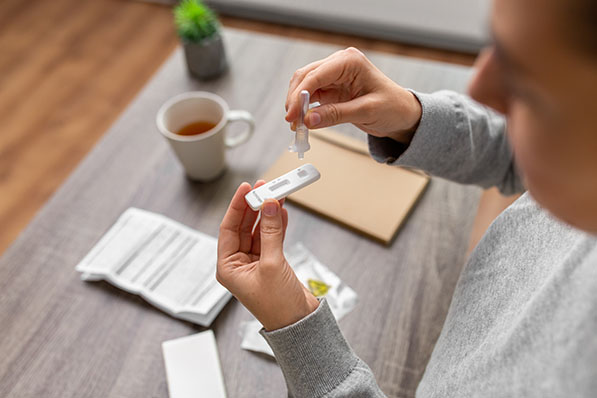On March 3, 2023, the California Department of Public Health (CDPH) updated its COVID-19 public health order and guidance following the end of the COVID-19 State of Emergency on February 28, 2023. CDPH updates include changes to isolation and quarantine recommendations, effective March 13, 2023, and face-covering recommendations, effective April 3, 2023.
Isolation and Quarantine
The updated CDPH order revises isolation and quarantine recommendations to align with the federal Centers for Disease Control and Prevention (CDC) isolation recommendations.
Individuals who have tested positive for COVID-19 should continue to isolate for five days but may leave isolation after five days, if they are feeling well, symptoms are improving and are fever-free for 24 hours. Notably, COVID-19 cases do not need to test negative after day five to leave isolation.
The order revises the definition of “infectious period” to align with the updated isolation recommendations. Infectious period is now defined as:
- For symptomatic confirmed cases, two days before the confirmed case had any symptoms (symptom onset date is Day 0) through Days 5–10 after symptoms first appeared AND 24 hours have passed with no fever, without the use of fever-reducing medications, and symptoms have improved; OR
- For asymptomatic confirmed cases, two days before the positive specimen collection date (collection date is Day 0) through Day 5 after positive specimen collection date for their first positive COVID-19 test.
The California Division of Occupational Safety and Health (Cal/OSHA) COVID-19 Prevention Non-Emergency regulations specifically incorporates the CDPH’s definition of infectious period, so this latest revision will impact employers’ COVID-19 return-to-work policies — essentially making it easier for employees to return to work after five days if they have improving symptoms and are fever free.
Face Coverings
The CDPH also updated its face-covering guidance. The order specifies that individuals must continue to follow the requirements of CDPH’s face-covering guidance through April 2, 2023, after which they will become recommendations. The general community recommendations are still based on the CDC’s community level framework, but the new guidance will remove the face covering requirements for certain specified high-risk settings when it takes effect on April 3.
CDPH’s new guidance also specifies that after ending isolation (no fever without the use of fever-reducing medications and symptoms are improving), confirmed COVID-19 cases may remove their mask sooner than Day 10 with two sequential negative tests at least one day apart.
Though the CDPH is relaxing its masking guidance, Cal/OSHA’s COVID-19 regulation still specifically requires employees to wear face coverings in certain circumstances. For example, the regulation specifies that COVID-19 cases must wear a face covering in the workplace until 10 days have passed since the date symptoms began or their first positive test. While Cal/OSHA’s regulation specifically incorporates the CDPH’s definition of “infectious period,” the new CDPH guidance allowing COVID-19 cases to remove their masks after two sequential negative tests doesn’t appear to impact the regulation’s 10-day requirement, meaning employers will likely need to continue to follow the regulation’s current face covering requirements as written.
Cal/OSHA is expected to update their COVID-19 Non-Emergency Regulation FAQs to address the recent CDPH changes. Employers should continue to monitor Cal/OSHA’s FAQs for additional guidance and clarity on the impact of the latest CDPH updates.
Update 3/14: Cal/OSHA updated their COVID-19 Non-Emergency Regulation FAQs on March 13, 2023, to address the CDPH’s changes. Cal/OSHA’s revised guidance adopts CDPH’s definition of infectious period, meaning COVID-19 cases can return to work after five days without a negative test, so long as they are feeling well, symptoms are improving and are fever-free for 24 hours. However, Cal/OSHA’s guidance maintains that COVID-19 cases that return to work must wear a face covering for ten days after symptoms first appear or their first positive test. Employers should review the revised guidance to ensure they’re COVID-19 prevention policies are up to date.
James W. Ward, Employment Law Subject Matter Expert/Legal Writer and Editor
CalChamber members can use the COVID-19 Prevention Checklist to help develop and implement their written COVID-19 prevention procedures. Not a member? Learn about the benefits of membership.

